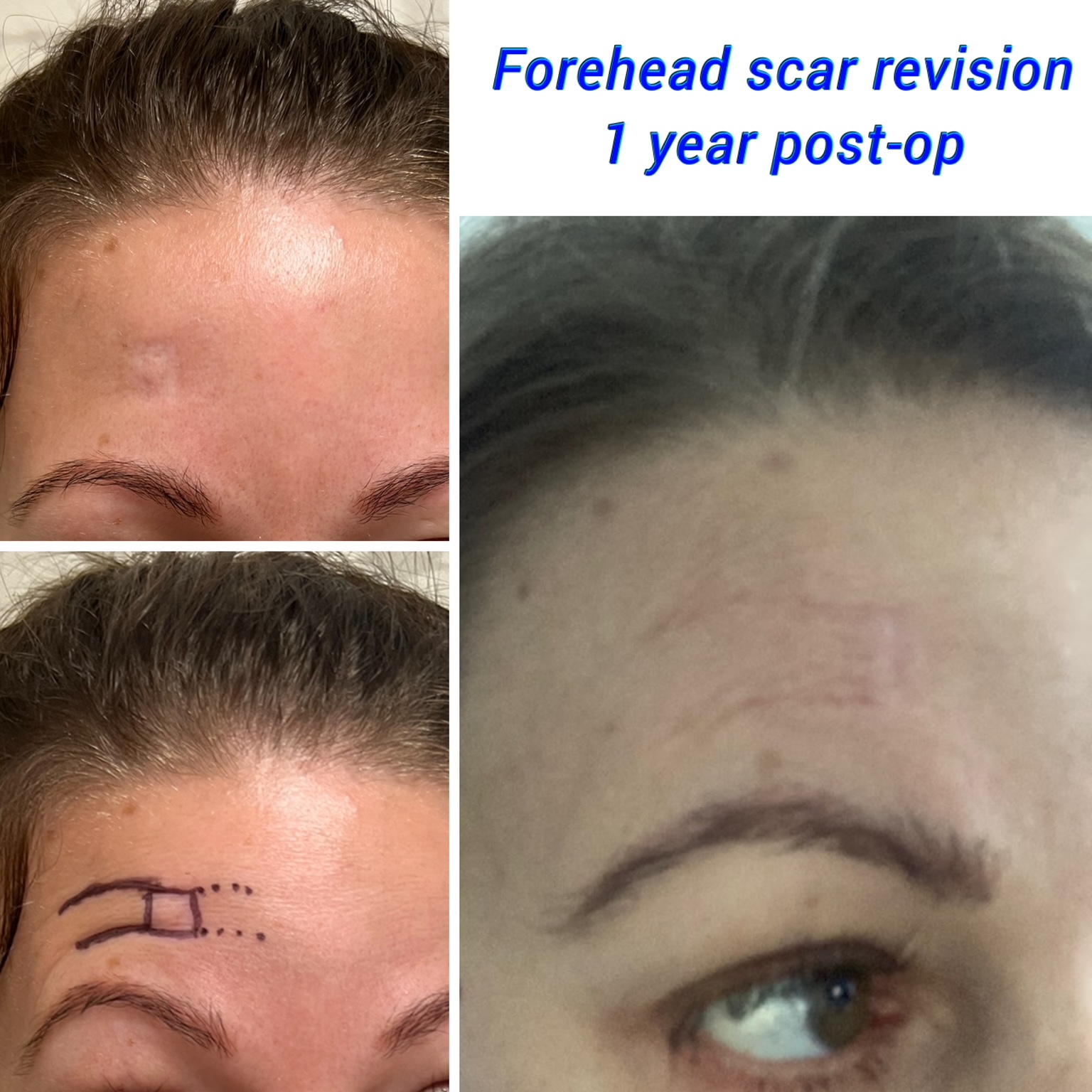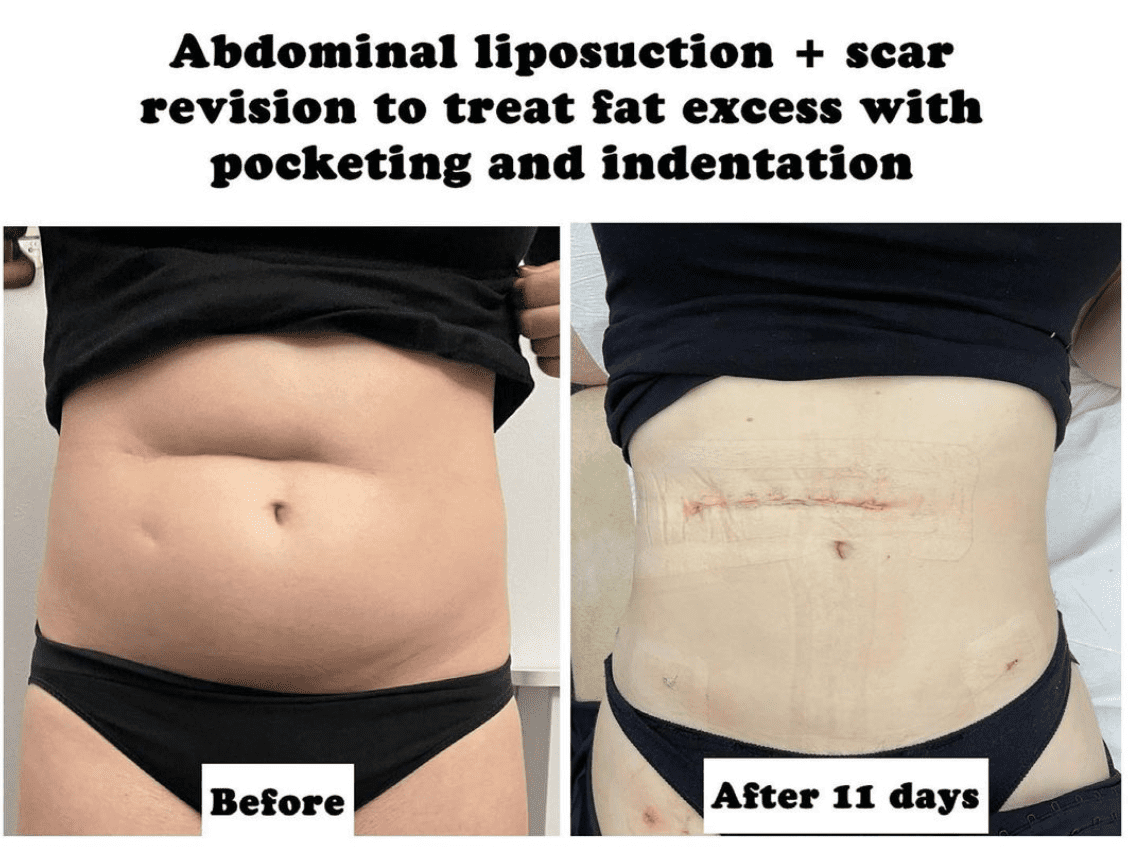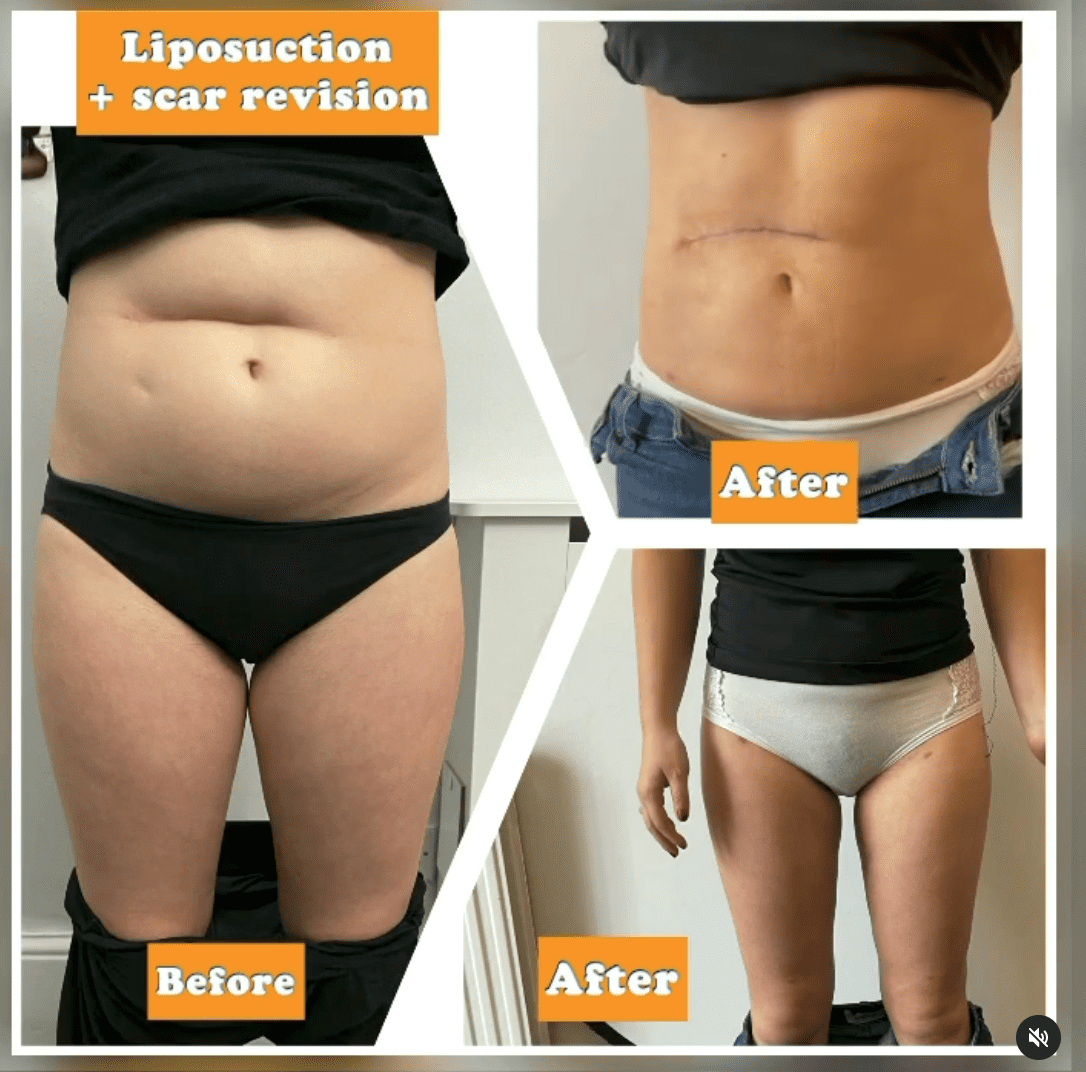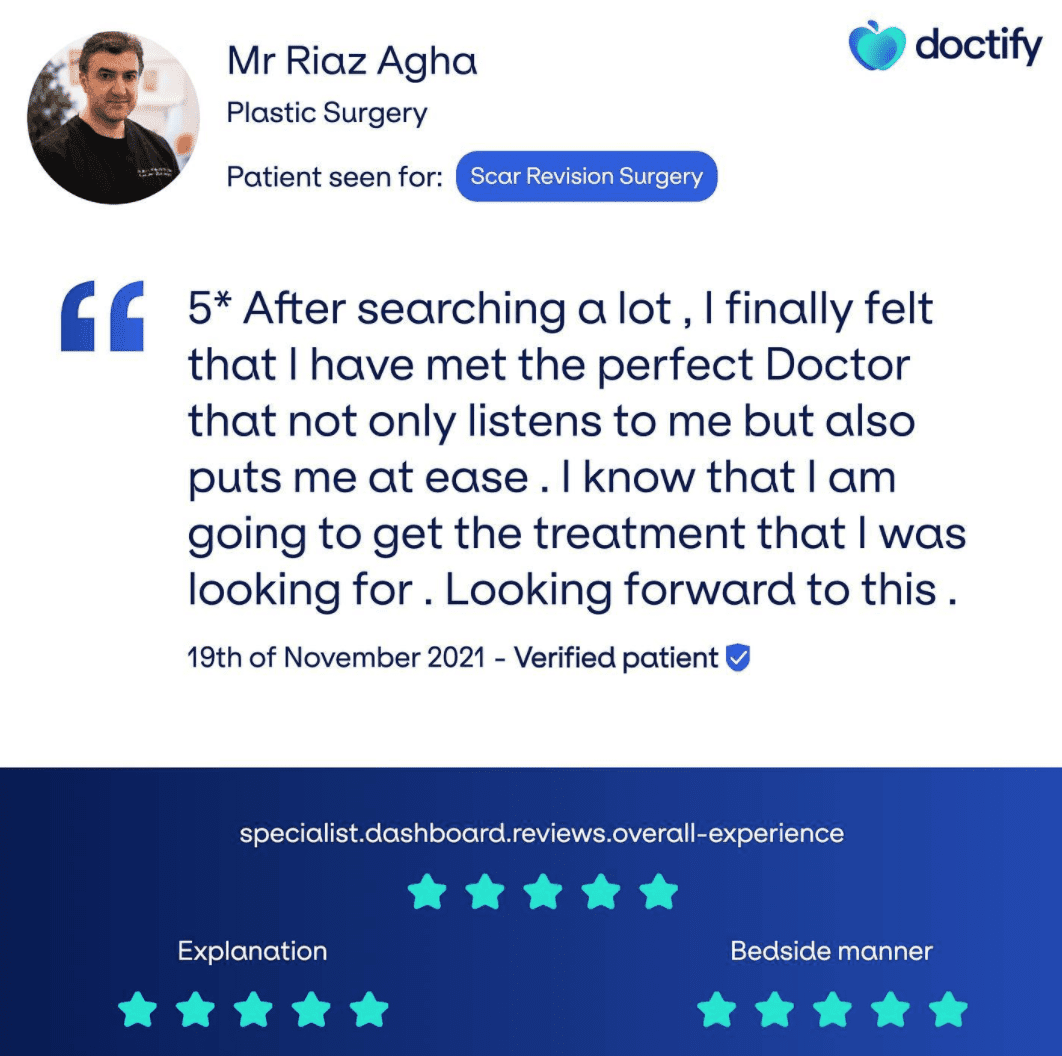If you have scarring from burns, acne, injuries, surgery, or chickenpox, you may be self-conscious about your scars. But with the right treatment, you can effectively get rid of scars, smooth skin, and reduce redness. Let’s break down your options when it comes to removing scars.
Scar Revision: Quick Overview
- Surgery Time: 1 hour
- Anaesthetic: Local
- Hospital Stay: Day
- Time Off Work: 2-3 days
- Exercise: 2 Weeks
- Mobile: Immediately
- Washing: 48 hours
- Full Recovery: 2 weeks
What is Scarring?
Scarring is your body’s natural healing process. When the dermis is damaged, your body produces new collagen fibres to fix the damage. This results in a new scar. Scars usually have a different texture and quality to the surrounding skin.
There are several types of scarring:
- Normal fine-line scars – a minor wound tends to leave a fine raised line.
- Keloid scars – when the scar keeps growing after the wound has healed.
- Hypertrophic scars – the result of excess collagen on the wound site.
- Scar contractures – these are often as a result of burns.
- Pitted or sunken scars – conditions like acne and chickenpox can have a sunken look.
What is the Difference Between ‘Bad’ and ‘Good’ Scarring?
A ‘good’ scar fades and eventually blends in with the surrounding skin. On the other hand, ‘poor’ scarring such as keloid or hypertrophic scar may stay visible for months after forming. With ‘poor’ scarring, even after it fades, it tends to remain visible.
Can You Get Rid of Scars?
You cannot completely erase scars. But scar revision can improve a scar and make it much more cosmetically pleasing. Depending on the type of scar you have, there are usually different treatment options available, such as:
- Topical treatments – treatments and solutions applied to the skin.
- Minimally invasive procedures – this includes laser treatments, chemical peels, injectables, and dermabrasion.
- Surgical scar revision – a surgical procedure to remove the scar.
Why Do People Have Scar Revision Surgery?
Scarring from injury, surgery, burns, acne, or chickenpox can leave you with permanent marks on the skin that make you feel self-conscious. Many patients seek out scar revision surgery to increase their confidence and reduce the appearance of scars.
Before and After Scar Revision Surgery
What is Scar Revision Surgery?
Scar revision treatments can’t guarantee the complete removal of scars, instead your surgeon will aim to reduce and minimise the look of scarring. It’s plastic surgery to improve the appearance of a scar anywhere on the body. Your surgeon makes an incision to remove the old scar.
You may require a combination of techniques and treatments. Your surgeon will formulate the best plan for scar removal. You can use excision and closure where the scar is cut out and the remaining skin is sutured together into a new, neater scar. If, after the excision, the scar is in a different direction, your surgeon can reposition your new scar so that it falls more naturally in your body’s creases. Another possibility is that there is a large area left behind after the scar has been removed. If this is the case, your surgeon can perform skin grafting at the same time.
How Long Does it Take to Recover From Scar Revision Surgery?
You will want to rest at home for a couple of days before returning to work. It’s important to avoid strenuous activities that would put pressure on the treatment area until you get the all-clear from your surgeon. Don’t expose the area to the sun for several months.
After excision surgery, you may have a dressing applied to the treated area. You should keep the area dry whether you have a dressing or not. Once any dressing or stitches have been removed, your surgeon will provide aftercare instructions to produce maximum results.
What Happens During Your Consultation?
At your consultation, you will share your concerns and desired results with your surgeon. You will talk through your medical history, and your surgeon will determine the best approach to scar revision. That could be through laser treatment or preparing you for scar revision surgery. The techniques used will be tailored around your individual case.
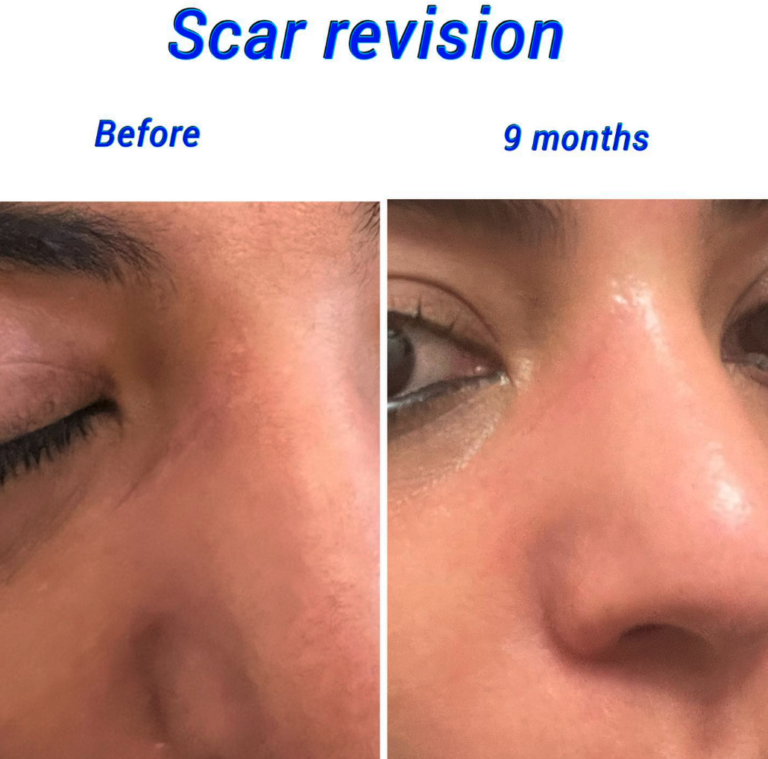
How to Prepare for Scar Revision Surgery
You should stop smoking in advance of your surgery to promote wound healing. To prepare for your surgery, you should ask your surgeon any questions you have so that you have realistic expectations of the outcome of the procedure.
Who is Suitable for Scar Revision?
You are suitable for scar revision if you are physically healthy but bothered by scarring. You have realistic expectations of the procedure and do not have any active skin conditions on the treated area, such as acne.
Are the Results Permanent?
Scar revision is long-lasting, but it may take several months before you see the final result.
Is Scar Revision Painful?
You will be under local anaesthetic during the procedure, so it’s not painful. You may experience some swelling and bruising after the surgery, which may last up to 2 weeks. This can be managed by painkillers.
How Long Do You Need to Keep Your New Scar Out of the Sun?
Scars are sensitive to strong sunlight. You should avoid direct exposure to sunlight until fully healed (at least 1 year). Sunlight can make scars darker and more noticeable. It’s a good idea to wear SPF and protect your skin when in the sun.
What Aftercare is Involved with Your Scar Revision Treatment?
The most important part of managing your scar is sun protection. If you have a skin graft, you will need to follow more rigorous aftercare instructions from your surgeon. Usually, after 2 weeks, you will be instructed to massage the treated area when comfortable to do so. This will help to soften the scar and tissue to speed up healing.
Can You Perform Scar Revision Surgery With Other Procedures?
Yes, you can combine scar revision surgery with almost any other procedure if deemed safe to do so by your surgeon.
What are the Risks and Complications of Scar Revision?
When deciding to go ahead with scar revision surgery, you need to be aware of any risks and potential complications. Risks include:
- Bleeding
- Infection
- Changes in how the skin feels
- Skin discolouration, swelling, and sensitivities
- Pain
- Damage to deeper structures
Scars are common and can be caused by a ton of different things. The depth, size of the injury, and location all play a part in how scarring forms. If you’re considering scar revision, book a consultation today to discuss all your treatment options, risks, benefits, and the recovery process.
To book a consultation today, please call 0203 582 4947 or email [email protected].
What Our Patients Say at The Harley Clinic
Further Reading:
- Scar Revision: Treatments, Benefits, and Risks
- Why is Collagen Important for Skincare?
- How to Stay Looking Young And Refreshed: 6 Tips From a Plastic Surgeon
- Can You Remove Acne Scars Permanently?
- What Do Breast Augmentation Scars Look Like?
- Cosmetic Surgery: How Do Silicone Strips for Scars Work?
- Exparel Local Anaesthetic: Uses, Dosages, and How Long it Lasts












